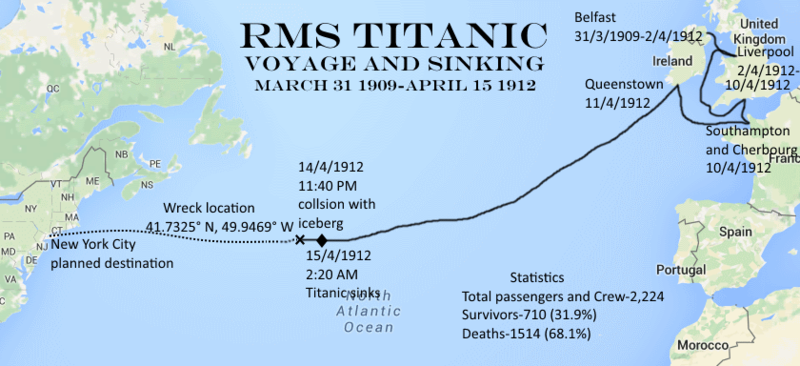The allure of the Titanic, the unsinkable ship that tragically met its fate in 1912, continues to captivate the world's imagination. Yesterday, I watched a short documentary - Back to the Titanic, in which, scientists embark on an incredible journey, diving beneath the ocean's depths to revisit and explore the current state of the shipwreck.
Rediscovering the Titanic Wreck
Back to the Titanic is a nice short documentary that transports viewers to the depths of the Atlantic Ocean. In it, a team of dedicated scientists and explorers, armed with cutting-edge technology, journey to the site of the historic tragedy. Their mission: to shed new light on the Titanic's current condition and unravel the mysteries hidden within its watery grave.
In the documentary, the expedition team employed a state-of-the-art submersible, equipped with cutting-edge technology, to journey to the depths of the Atlantic Ocean and explore the wreckage of the Titanic. This specially designed submarine played a pivotal role in the mission, allowing scientists and explorers to reach the site of the historic shipwreck, which lies over 12,000 feet below the ocean's surface. The submersible's advanced features, including high-definition cameras and robotic arms, provided the team with the tools needed to document the ship's current condition and unravel the mysteries concealed within the watery abyss. This sophisticated submersible allowed for a breathtaking and in-depth exploration of the Titanic's resting place, providing viewers with a unique opportunity to witness the ship's hauntingly preserved remnants.
The Titanic's Ill-Fated Journey
The Titanic, the world's most luxurious and opulent ship, set sail on April 10, 1912, from Southampton, England, on its maiden voyage to New York City. The ship was a marvel of engineering, a symbol of innovation, and a testament to human ambition. On its way to America, it struck an iceberg late in the evening of April 14, 1912. Despite its reputation as "unsinkable," the ship tragically sank on the early morning of April 15, 1912. Over 1,500 lives were lost in one of the deadliest maritime disasters in history.

The Titanic's Prestigious Passengers
The Titanic's maiden voyage attracted some of the most prominent and affluent individuals of the time. Among the passengers were titans of industry, celebrities, and wealthy elite, all lured by the promise of luxury and opulence. The ship's grandeur included exquisite dining rooms, lavish cabins, and amenities that catered to the who's who of the world.
Exploring the Titanic Today
The documentary Back to the Titanic offers a unique opportunity to witness the ship in its current state. As the team of scientists dives into the abyss, viewers can see the ship's wreckage lying over 12,000 feet (or 3.7 km) below the ocean's surface. The documentary showcases the remarkable preservation of certain areas, the relentless forces of corrosion, and the challenges of preserving history submerged in the deep sea.
Hamish Harding, a renowned aviation magnate and passionate explorer. His fervent curiosity led him to a Guinness World Records recognition, and ultimately, it steered him towards a momentous descent to the Titanic's sunken wreckage, lying some two and a half miles beneath the surface of the North Atlantic. Tragically, on June 18, 2023, the submersible vessel he occupied with four other adventurers lost contact with its mother ship. Following a multinational, five-day search that spanned an area comparable to the size of Massachusetts, the U.S. Coast Guard confirmed on Thursday that all five souls on board had met their demise due to a "catastrophic implosion" of the submersible craft, which was part of OceanGate Expeditions. Mr. Harding was 58 years old at the time of this tragic event.
The mission's importance goes beyond fascination; it contributes to our understanding of marine archaeology and helps preserve the memory of those who perished on that ill-fated night. It also underscores the enduring fascination with the Titanic and its enduring place in history.
Back to the Titanic provides a compelling glimpse into the world of deep-sea exploration and a unique opportunity to revisit the iconic shipwreck that has fascinated the world for over a century. The documentary combines cutting-edge technology with the historical significance of the Titanic to give us a remarkable underwater journey that sheds new light on the tragic events of April 1912. It is a testament to the enduring legacy of the Titanic and the unquenchable human curiosity that drives us to explore the past, even in the darkest depths of the ocean.
